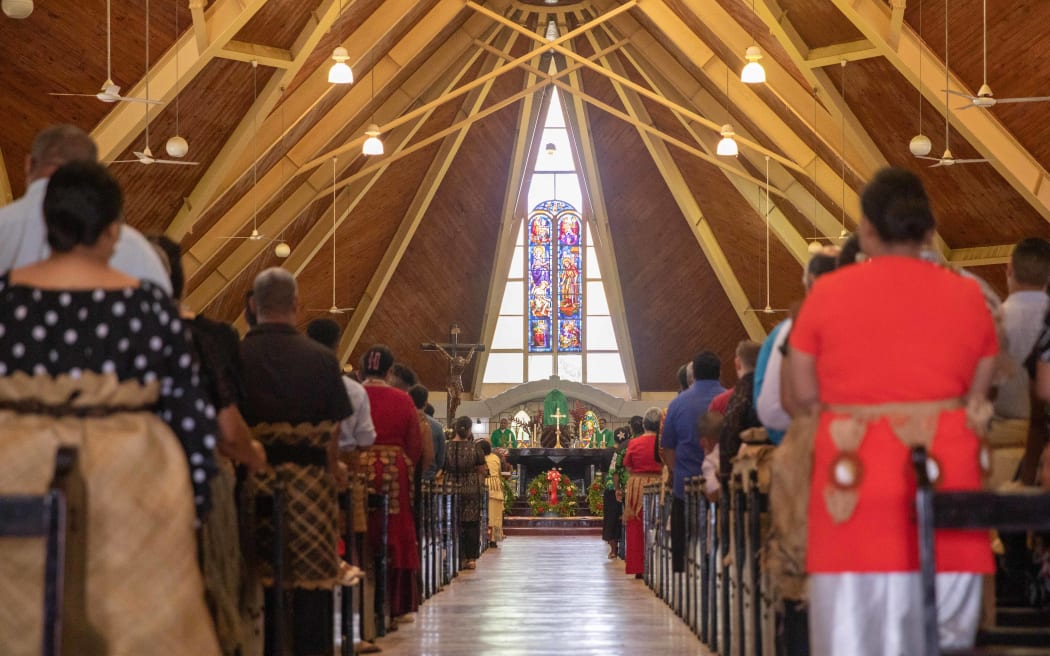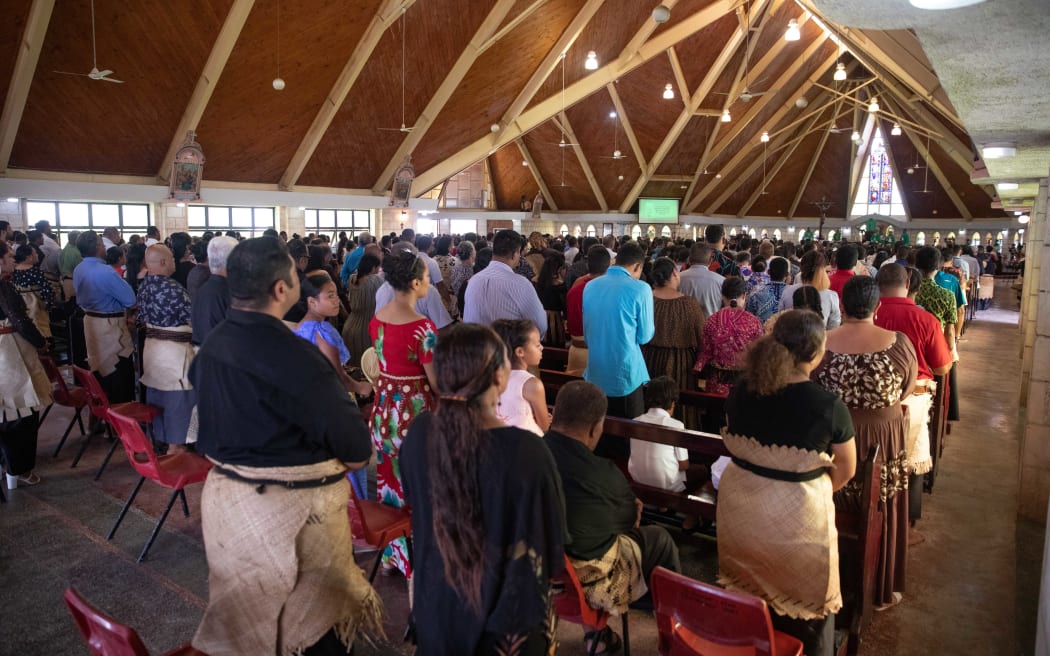Churches across Tonga have commemorated the victims and the struggles endured as a result of the eruption of the Hunga Tonga-Hunga Ha’apai volcano on 15 January 2022.
The eruption, the largest atmospheric explosion recorded during modern history, was estimated to be hundreds of times more powerful than the atomic bomb that destroyed Hiroshima.
It generated a huge sonic boom that could be heard as far away as Alaska — more than 9000km away.
Hundreds packed the Cathedral of St Mary in Nuku’alofa — one of the largest churches in Tonga — where sermons were delivered, commending Tongans for showing resilience over the past year.
“All the different churches are commemorating,” said Monsignor Vicar Lutoviko Finau, who overlooked the service at the cathedral.
“We’re coming together to thank God, and to encourage one another,” he said.
“Listening to the various people on the radio across this week, there’s been a lot of conviction from people that January 15th was a miracle.”
A conviction that is shared by vicar Lutoviko himself. The cathedral he oversees sits less than 100m away from Nuku’alofa’s waterfront. Remarkably, the church suffered little damage, thanks in part to a reef system entrenching Nuku’alofa’s bay area.
“I was with parishioners cleaning up this place, preparing for the liturgy on Sunday … all of a sudden I heard the big bang. We took off right away because we knew there would be a tsunami . . . I took my family and went to higher ground.
Tongan volcano eruption — relocation nothing easy. Video: RNZ Pacific
“I couldn’t sleep that night because I wanted to know what happened to the cathedral because it [was] so close to the seafront,” vicar Lutoviko said.
“When I drove around to the seafront the next day . . . the seawater flooded the area of the cathedral, but there was none inside the cathedral . . . the only damage to the building was from the ashfall which . . . covered it.”

Three people died as a result of the eruption, a remarkably low number of deaths considering the magnitude of the disaster. Thousands of Tongans were left homeless as a result, and livelihoods destroyed.
“For myself, today marks history”, said Kilistiana Moala, a member of the congregation.
“Being alive today, I’m just glad to be still here.”

For many Tongans, the commemorations did not just pay tribute to Tonga’s survival of the eruption. Less than a month afterwards, the covid-19 pandemic reached Tonga, resulting in the deaths of at least a dozen people and leaving thousands ill.
“It was a very tough year,” Moala said. “I worked with Tonga’s Geological Services, so we did a lot of work in the aftermath of the volcanic eruption.
“After the volcanic eruption, we had to work during lockdowns because of the Covid outbreak . . . it was really hard because we couldn’t be with our families whenever we wanted.”
It is a sentiment shared by Tonga’s Prime Minister Siaosi Sovaleni Hu’akavameiliku, who came into power just days before the eruption. Three months later, he fell ill to covid-19.
“Thank the Lord that we are still here,” Hu’akavemeiliku told RNZ Pacific.
“Moving into a new year, hopefully things will continue to get better.”
This article is republished under a community partnership agreement with RNZ.
Article by AsiaPacificReport.nz









